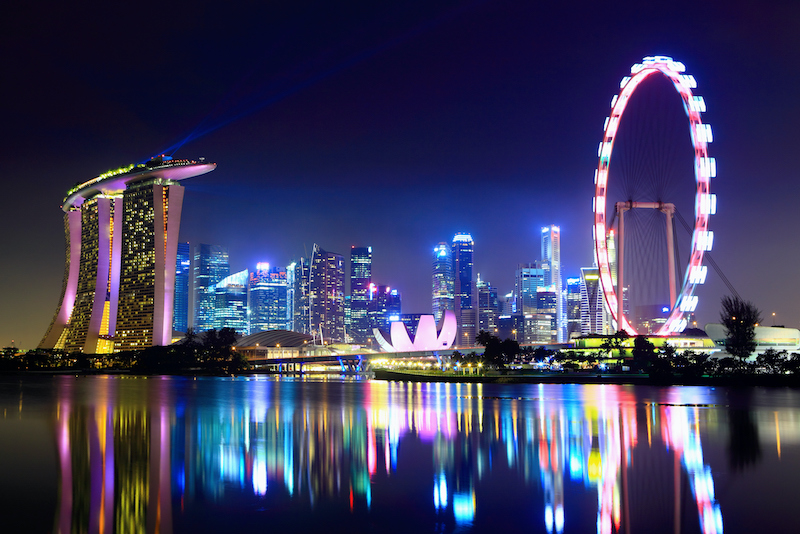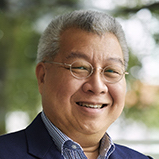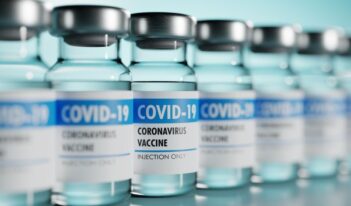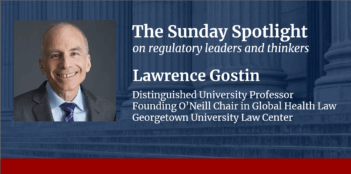
The pandemic appears tailor-made for Singapore’s managerial and interventionist style of governance.
The Singapore government acted with characteristic efficiency and decisiveness when the first suspected COVID-19 case landed on the island’s shores in January. The next day, Singapore’s first COVID-19 case was confirmed. Shortly after, the government formed a Ministerial Task Force—co-chaired by the Ministers of Health and National Development—to deal with the coming contagion.
Working off a set of protocols devised after the SARS pandemic of 2003, the government immediately enforced contact tracing procedures to identify those who came into contact with infected individuals and place them under two-week quarantine orders.
After these immediate measures, the Singapore government’s COVID-19 response consisted of a raft of regulations and restrictions.
The government imposed travel restrictions, with the first wave applied to inbound visitors, especially those from China. Subsequently, all inbound passengers were put on two-week quarantines and, by March 23, the government had prohibited short-term visitors from arriving or transiting through Singapore.
Restrictions on the population’s local movement were imposed in early April, in a series of what the government called “circuit breaker” measures. To effect these measures, the Parliament of Singapore passed the COVID–19 (Temporary Measures) Act on April 7. Among other things, this wide-ranging law suspended contractual obligations, provided relief to financially distressed parties, established practices for conducting in-person meetings, and introduced measures to keep the courts functioning using remote communications technology. The Act also allowed government officials to restrict certain activities to prevent the spread of the virus.
Pursuant to this Act, a number of regulations emerged as subsidiary legislation, dealing with various issues to control the situation. Regulations provided for the transfer of property tax remissions from landlords to tenants, the remote solemnization of marriages, temporary relief for inability to perform contracts, and alternative arrangements for various corporate, charitable, trade union, and society meetings. Other regulations also restricted the operation of businesses and movement of people—most notably the COVID-19 (Temporary Measures) (Control Order) Regulations 2020.
In May, the Parliament of Singapore amended Article 64 of Singapore’s Constitution, which governs Parliament’s sessions. The amendment allows for Parliament to sit in a location other than the Parliament House if Parliament “resolves that it is or will be impossible, unsafe, or inexpedient for Parliament to sit and meet in one place.” The provision allows for the designation of an alternative parliamentary meeting place and is intended to be temporary, applicable only for a period of six months after an appointed date, although it can be extended for an additional six months after that.
Finally, Parliament passed the Parliamentary Elections (COVID-19 Special Arrangements) Act, which authorized temporary arrangements to conduct elections so that voters subject to quarantine or stay-at-home orders could vote outside of their electoral divisions. The Act also allows aspiring candidates who are ill to be absent during nomination proceedings and for special arrangements to be made for the poll and vote counting.
Singapore’s regulatory response to COVID-19 demonstrates the supremacy of parliamentary logic. Despite the fact that COVID-19 infections soared in late March and April, the government saw no need to declare a state of emergency—even though the Constitution anticipates such a proclamation if “the security or economic life of Singapore is threatened.”
The main reason why the President has not declared a state of emergency is the ruling party’s overwhelming parliamentary majority. The People’s Action Party—which has been in power since 1959—dominates Parliament in a way few other democratically-elected parties do. In the current Parliament, the People’s Action Party holds 82 of the 88 elected seats and therefore has more than the two-thirds majority needed to amend most provisions in the Constitution. By the same measure, the People’s Action Party also has a strong enough majority either to enact a new law or amend an existing law to deal with the pandemic. This is exactly what Singapore’s Parliament did.
As is typical in Westminster parliamentary systems of government, the Singapore Parliament typically delegates wide-ranging powers to ministers to make rules, regulations, and orders necessary to put legislation into effect. Since the typical ministerial remit is large, there is little need for the executive to return to Parliament to seek its endorsement for potential measures. John Ferejohn and Pasquale Pasquino of New York University have characterized this “legislative model” of dealing with an emergency as one that “handles emergencies by enacting ordinary statutes that delegate special and temporary powers to the executive.”
Even though the ruling party’s huge majority in Parliament offers almost unbridled power to legislate during this time of crisis, the People’s Action Party has carefully avoided doing so.
The most extensive piece of legislation passed—the COVID-19 (Temporary Measures) Act—is meant, as its title suggests, as a temporary measure that will be repealed when its provisions are no longer necessary. Although the doctrine of desuetude—the idea that unused laws become unenforceable—is not recognized in Singapore, the way this Act is framed makes it impossible for Parliament to continue using the Act once the contagion has been addressed. The Act also specifies limitations on how long ministerial regulations and orders may be in effect. For example, some regulations enacted to effect movement and other control orders last at most a year and expire in April 2021.
The fact that laws were amended to enable Parliament to continue sitting and to facilitate a general election during the pandemic sends a clear signal: These regulatory measures are necessary deviations from the norm, and Parliament intends to return to the status quo once the pandemic has been contained. This regulatory structure is yet another hallmark of Ferejohn and Pasquino’s “legislative model.”
One concern that arises in the constitutional structure of Singapore’s pandemic response is ensuring accountability for the proper use of economic stimulus budgets.
Between January and June, the government unveiled four different economic stimulus packages to support businesses and industries most affected by the pandemic, as well as ordinary citizens. These packages come to nearly $67 billion, most of which will be funded from current budget surpluses—although about $37 billion will be drawn from Singapore’s constitutionally protected past reserves.
In 1991, Singapore’s Constitution was amended to require that Parliament obtain the President’s concurrence to draw on the state’s past reserves—those not accumulated by the current government during its term of Parliament. This amendment was crucial, given that under the Westminster system, a political party in power had the wherewithal to pass any budget it liked, even if doing so risked financially ruining the country.
The office of President—which, prior to this amendment, was a merely ceremonial head of state—was transformed into an elected office with limited powers, one of which was to approve such deficit budgets. Although the idea of having a second key to unlock the past reserves is logical and has been constitutionally enforced, there is no mechanism in the Constitution to hold the Parliament accountable for using the funds for the declared purpose.
In late May, President Halimah Yacob indicated her approval for the draw down under the fourth stimulus package, called the Fortitude Package, after having concurred with Parliament on three earlier budgets. During her online press conference, President Halimah explained that because Singapore was weathering its worst crisis since obtaining independence in 1965, she had spent “a great deal of time” thinking about the decision to draw from past reserves. To make her decision, Yacob consulted with the Prime Minister and Deputy Prime Minister, as well as her Council of Presidential Advisors, before concurring with the Cabinet.
The COVID-19 crisis was tailor-made for Singapore’s executive, top-down, interventionist, and managerial style of governance. For the most part, the government has acted sensibly and responsibly, and was therefore able to secure widespread cooperation from the people. Instead of capitalizing on the crisis to roll back civil liberties and democratic processes, all measures that were put in place are temporary and are fully expected to be reversed once the crisis is over.
This essay is part of an ongoing series, entitled Comparing Nations’ Responses to COVID-19.




